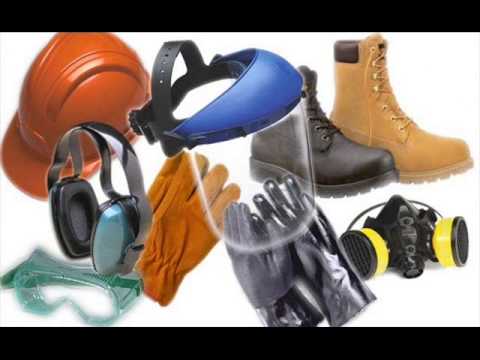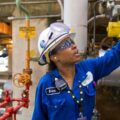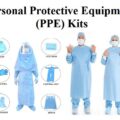What is Personal protective equipment (PPE)?
Personal protective equipment is protective clothing, helmets, goggles, or other garments or equipment designed to protect the wearer’s body from injury or infection. The hazards addressed by protective equipment include physical, electrical, heat, chemicals, biohazards, and airborne particulate matter.
PPE does not include:
- Ordinary working clothes or uniforms not designed to provide for the health or safety of workers;
- Clothing provided for food hygiene purposes;
- Equipment used for protection while travelling on a public road (ie motorcycle or bicycle helmets);
- Equipment used during competitive sport competitions (but other protective equipment used by sports instructors would be included eg life jacket worn by canoe instructor);
- An offensive weapon used as self-defence or as deterrent equipment. For example, truncheons or CS gas canisters as used by the police or military (but helmets, body armour and other PPE used to protect staff from physical violence, is included);
- Portable devices for detecting and signalling risks and nuisances, such as badges for detecting radiation, or personal gas detectors.
Types Of PPE
Selecting the right PPE to sufficiently reduce exposure to hazards is essential to laboratory safety. The purpose of this section is to provide resources allowing researchers to identify and classify various types of PPE so the appropriate safety precautions are taken when conducting research. For the purpose of this site, PPE will be classified into categories, each category includes its own corresponding safety equipment that will be described below.
1. PPE FOR HEAD PROTECTION
Wearing PPE for head protection will help you avoid any harm that may come to you from falling materials or swinging objects. Moreover, the head protectors are designed to protect you from knocking against stationary objects. Some kinds of head protection equipment (e.g. caps and hair nets) can even protect against entanglement or scalping on machinery.
Examples of head protection equipment:
- Helmets;
- Hard hats;
- Bump Caps;
- Guards;
- Accessories.
Examples of activities where you may need head protection:
- Workplace related: construction or building repair (e.g. renovation, restoration, etc.) and work in tunnels or excavations;
- Leisure/Sport related: driving motorcycles.
Wearing a helmet offers protection and can prevent head injuries. Select a sturdy helmet that is adapted to the working conditions. These days you can find many elegant designs and you can choose extra options such as an adjustable interior harness and comfortable sweatbands.
2. PPE FOR EYE AND FACE PROTECTION
The eyes are the most complex and fragile parts of our body. Each day, more than 600 people worldwide sustain eye injuries during their work.Numbers are scary! Every day, 600+ workers worldwide suffer from eye injuries. Such injuries can be avoided simply by wearing the proper eye and face protection equipment. As examples of such PPE can be mentioned the following ones:
- Safety glasses and goggles;
- Eye and face shields;
- Eyewear accessories;
- Over specs;
- Visors.
You are encouraged and advised to wear eye and face protection equipment when:
- working with lasers or power driven tools;
- using gas or vapour under pressure;
- performing welding operations;
- handling hazardous substances.
Thanks to a good pair of safety glasses, these injuries could be prevented. Do you come into contact with bright light or infrared radiation? Then welding goggles or a shield offer the ideal protection!
3. HEARING PROTECTION
Do you work in an environment with high sound levels? In that case it is very important to consider hearing protection. The hearing protection equipment is vital when working in an environment with high-sound levels. The type of hearing protection should not only be suitable for the working environment but also provide a level of hygiene and comfort to the users. A good practice is to provide employees with a range of protectors and then allow them to select the ones which suit them the best.
Examples of hearing protection equipment:
- Earplugs and defenders;
- Noise meters;
- Communications sets;
- Acoustic foam.
Earplugsare very comfortable, but earmuffs are convenient on the work floor as you can quickly put these on or take them off.
4. RESPIRATORY PROTECTION
The respiratory protection covers a broad group of PPE: breathing apparatus, full face or half mask respirators, powered respirators, protective hoods, disposal face masks, detectors, monitors, etc. Adequate training on how users should use the equipment is always required.This type of PPE must be present when being in contact with large amounts of gases, powders, dust and vapours.
Wearing a mask at work is no luxury, definitely not when coming into contact with hazardous materials. 15% of the employees within the EU inhale vapours, smoke, powder or dusk while performing their job. Dust masks offer protection against fine dust and other dangerous particles. If the materials are truly toxic, use a full-face mask. This adheres tightly to the face, to protect the nose and mouth against harmful pollution.
5. PPE FOR YOUR HANDS
Arms, hands and fingers are often injured and, therefore, it is vital to wear hand protection equipment when it is required. The hand protection equipment can ensure protection against heat, cold, vibrations, burns, cuts by sharp objects, bacteriological risks and chemical contamination.
Examples of hand protection equipment:
- Work gloves and gauntlets;
- Wrist cuff arm nets.
Activities requiring hand protection equipment:
- construction and outdoor work;
- working with vibrating apparatus;
- working in hot or cold environments;
- working with chemicals and hazardous elements;
- manual handling of abrasive or sharp objects.
Hands and fingers are often injured, so it is vital to protect them properly. Depending on the sector you work in, you can choose from gloves for different applications:
- protection against vibrations
- protection against cuts by sharp materials
- protection against cold or heat
- protection against bacteriological risks
- protection against splashes from diluted chemicals.
6. PPE FOR THE FEET
The foot protection equipment is designed to protect the feet and legs against various hazards, such as extreme temperatures, crushing, piercing, slipping, cutting, chemicals and electricity. It is typically required when users are involved in construction activities, working in very cold or hot environments, working with chemicals and forestry, or when manually handling heavy objects.
As examples of foot protection equipment can be pointed out the following ones:
- Safety boots and shoes;
- Anti-static and conductive footwear.
An antiskid sole is useful when working in a damp environment, definitely if you know that 16,2% of all industrial accidents are caused by tripping or sliding. On slippery surfaces, such as snow and ice, shoe claws are recommended. Special socks can provide extra comfort.
7. WEAR THE CORRECT WORK CLOTHING
Preventing accidents is crucial in a crowded workshop. That is why a good visibility at work is a must: a high-visibility jacket and pants made of a strong fabric can help prevent accidents. Just like the hand protection, there are versions for different applications.
Usually, body protection equipment is required in the following cases:
- For protection against weather conditions when working outdoors;
- Ensuring the high-visibility of users when they work in areas where there is a mixed vehicle (e.g. bikes, motors, cars and busses) and pedestrian traffic;
- For users’ protection against extreme temperatures;
- Ensuring protection against entanglement, drowning, chemical contamination, etc.
Examples of body protection equipment:
- Life jackets;
- Clothing for specific weather conditions;
- High-visibility clothing;
- Harnesses, and others.
WORST-CASE SCENARIO
Prevention is better than cure. A smart thing is to be prepared for the worst. A classic first-aid kit is no luxury but a first-aid kit for the eyes can also be an essential first aid. If the employee comes into contact with chemicals, a safety shower is mandatory, so that he can rinse the substances off his body at any moment.
PREVENTING ACCIDENTS: PICTOGRAMS
Not only is preparing your workshop for accidents a smart thing to do, it is even smarter to organise your workshop in such a way that no serious accidents can take place. A simple way to make your workshop safer is to use pictograms: indicating flammable materials, the necessary use of hearing protection, indicating emergency exits.













